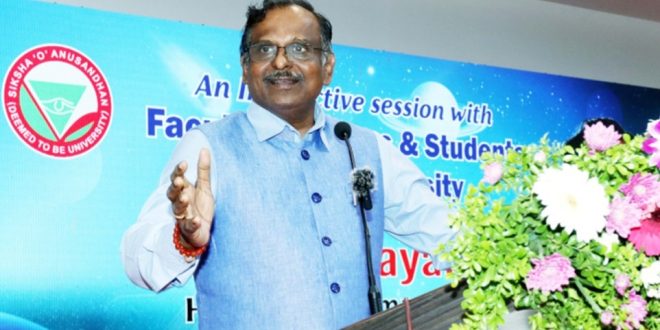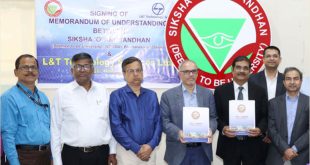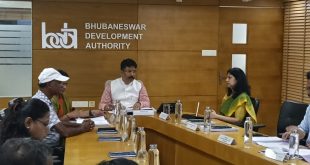Bhubaneswar: The Indian Space Research Organisation (ISRO) is planning to put in space the Bharatiya Antariksh Station (BAS), a modular space station, by 2035, ISRO’s Chairman and Secretary of the Department of Space, Dr. V. Narayanan, said on Wednesday.
The launching of BAS will enhance India’s presence in space research and foster advancement in space technology, Dr. Narayanan said while having an interaction with students, researchers and faculty members of Siksha ‘O’ Anusandhan Deemed to be University (SOA) here.
“India’s first ever human space flight mission, ‘Gaganyaan’ is expected to be launched in March 2027 for which four test pilots are undergoing training to be astronauts,” he informed.
This will be preceded by launching of uncrewed missions to test systems as India’s objective is to become a global space power by 2047, Dr. Narayanan said adding only Russia, the United States and China had been successful to independently launch humans into space till now.
Dr. Narayanan, a rocket propulsion expert, said though India’s space program had started in 1962, it had traversed a long way technologically since then and was contemplating to take an Indian to the Moon and bring him back safely.
Pointing out that ISRO was established in 1969 by when the US had already become successful in putting Neil Armstrong on the Moon, he said despite the late start ISRO had made phenomenal progress and succeeded in putting the first 35 kg satellite in space in 1980.
“Since then, India has been able to develop six generations of launch vehicles and created a record by conceiving a 40-storey high rocket in only 27 days,” he said.
There was a time, Dr. Narayanan said, when India was mocked, insulted and denied access to cryogenic engine technology. But India had, since then, been able to develop three such engines, two of them indigenously.
“India is the only country which soft landed Chandrayaan-3 on Moon’s south pole and is the first to find water molecules on the lunar surface,” he said adding the country created a world record by placing more than 100 satellites in space on a single mission.
India is also the only nation to have reached Mars’ orbit in its very first attempt, Dr. Narayanan said.
Chandrayan-4, Dr. Narayanan said, would be a complex mission as it would be expected to bring back lunar sample. India planned to launch Chandrayaan-5 in collaboration with Japan.
One of ISRO’s significant achievement has been the successful completion of docking experiment involving two satellites which was executed with exceptional precision on January 16, 2025. The docking happened when the satellites were travelling at a speed of 28,400 km per hour, he said.
Subsequently, ISRO scientists successfully conducted the undocking experiment in a circular orbit, Dr. Narayanan said.
Prof. Damodar Acharya, Chairman of SOA’s International Advisory Board and former Director of IIT, Kharagpur was present.
SOA’s Vice-Chancellor Prof. Pradipta Kumar Nanda welcomed Dr. Narayanan while Prof. Renu Sharma, Additional Dean (Student Affairs), proposed the vote of thanks. Prof. Jyoti Ranjan Das, Dean (Students’ Welfare) conducted the program.
 Update Odisha-Latest Odisha News I Breaking News Get latest news on Odisha, Govt. Jobs, OSSC, OPSC, Entertainment, Crime, Sports, and Education
Update Odisha-Latest Odisha News I Breaking News Get latest news on Odisha, Govt. Jobs, OSSC, OPSC, Entertainment, Crime, Sports, and Education



